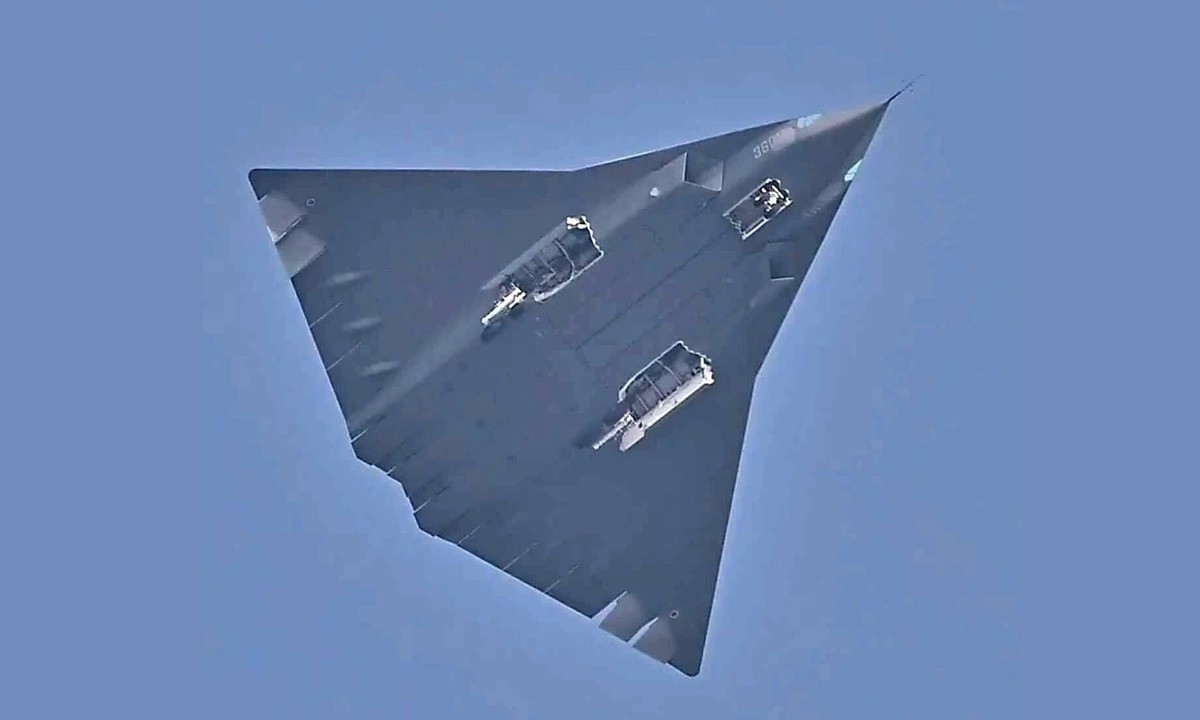Images circulating on social media on 4/8 revealed a test flight of a Chinese aircraft employing a flying wing design. The pointed, arrow-like nose seamlessly integrates with the wings below.
The sharply angled wings feature triangular protrusions on the trailing edges, forming a near W-shape. The aircraft lacks traditional vertical and horizontal tail stabilizers.
 |
China's new fighter aircraft in a photo posted on 4/8. Photo: X/Rupprecht_A |
The wide fuselage suggests ample space for fuel and equipment, though weapon bays are not discernible in the current images. The aircraft has a tricycle landing gear configuration, with the nose gear appearing to have two wheels, indicating a design built for heavy loads or potential carrier operations.
Military experts Thomas Newdick and Tyler Rogoway of War Zone believe the aircraft's design prioritizes stealth, similar to two manned Chinese fighter prototypes that emerged late last year: the J-XDS/J-50 and the J-36.
The images do not confirm whether this is a manned aircraft or an unmanned aerial vehicle (UAV).
The J-XDS/J-50 is Shenyang Aircraft Corporation's 6th-generation fighter prototype, while the J-36 is a Chengdu Aircraft Industry Group project. Both are tailless designs, but serve different roles and are unlikely to be direct competitors.
 |
China's J-36 fighter in a photo posted on 28/3. Photo: X/DD_Geopolitics |
"It's plausible that Chengdu Aircraft Industry Group is developing a competitor to Shenyang's 6th-generation stealth fighter. This explains the design similarities to the J-36," Newdick noted.
Some observers suggest the aircraft could be China's answer to the US Collaborative Combat Aircraft (CCA) program. "Two protrusions on the rear fuselage hint at twin engines, uncommon for more expendable loyal wingman UAVs," Rogoway observed.
The two US experts also propose the aircraft could be a UAV capable of both loyal wingman duties, like the CCA, and independent operation.
Pham Giang (According to War Zone)












